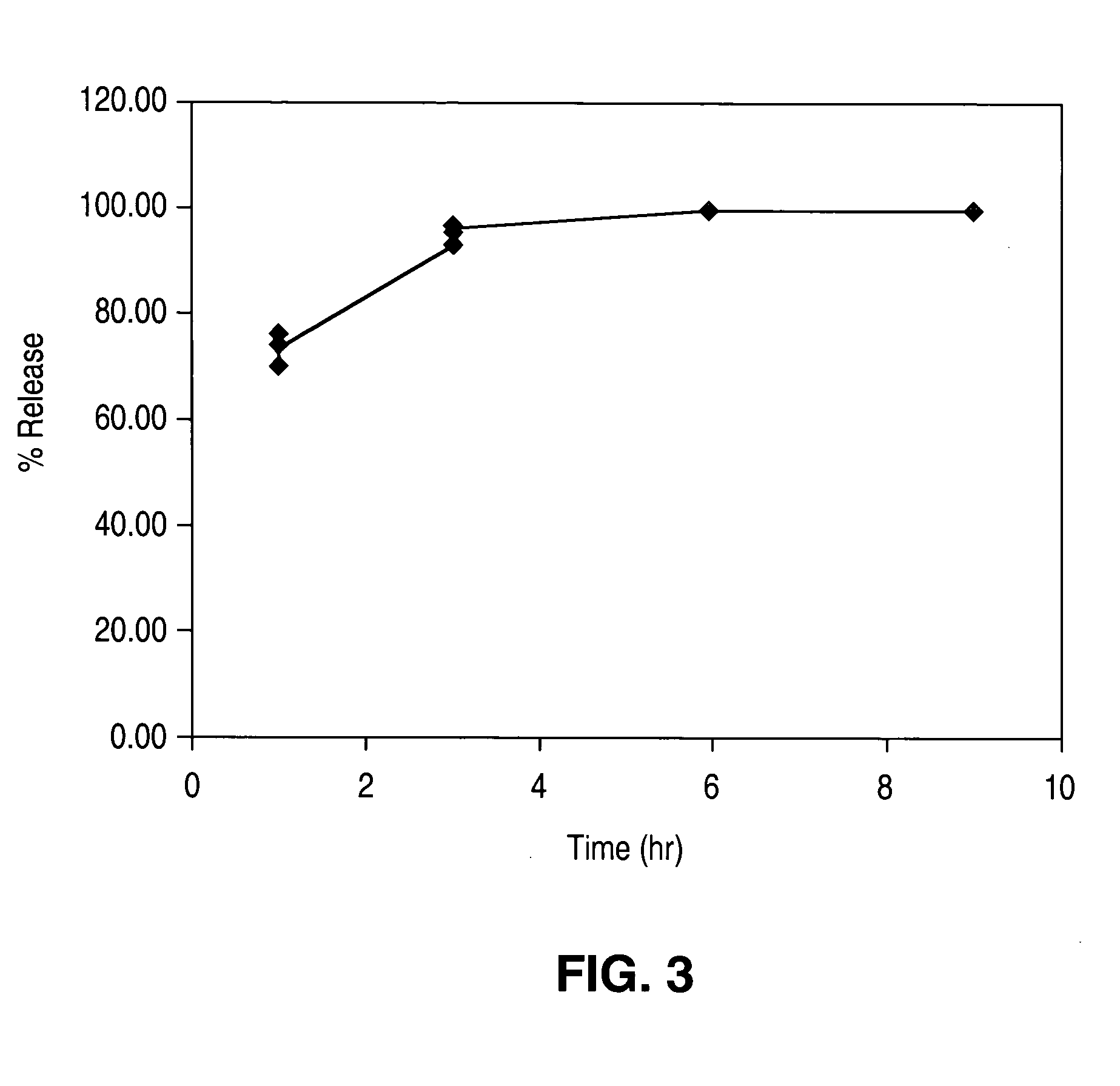Coatings for implantable devices including biologically erodable polyesters and methods for fabricating the same
a technology of bioerodable polyester and implantable devices, which is applied in the direction of coatings, prostheses, surgery, etc., can solve the problems of intimal flaps or torn arterial linings, affecting the treatment effect of patients,
- Summary
- Abstract
- Description
- Claims
- Application Information
AI Technical Summary
Problems solved by technology
Method used
Image
Examples
example 1
[0051] A first composition was prepared by mixing the following components: [0052] (a) about 2.0 mass % poly(caprolactone) (PCL); and [0053] (b) the balance, a solvent blend, the blend comprising tetrahydrofuran (THF) and xylene in a mass ratio between THF and xylene of about 3:1.
[0054] The first composition was sprayed onto the surface of a bare 12 mm VISION stent (available from Guidant Corporation) and dried to form a stent coating. A spray coater was used having a 0.014 fan nozzle maintained at about 60° C. with a feed pressure of about 0.2 atm (about 3 psi) and an atomization pressure of about 1.3 atm (about 20 psi). The dry stent coating contained about 300 μg of PCL. To remove the solvent, the coating was baked at about 60° C. for about 2 hours.
[0055] The PCL coated stent was then subjected to a simulated use test. To test, an assembly comprising the PCL coated stent and a delivery catheter was made by crimping the stent on the catheter. The assembly was guided through a to...
example 2
[0056] A first composition was prepared by mixing the following components: [0057] (a) about 2.0 mass % PCL; and [0058] (b) the balance, a solvent blend, the blend comprising THF and xylene in a mass ratio between THF and xylene of about 3:1.
[0059] The first composition was sprayed onto the surface of a bare 12 mm VISION stent, dried and baked as described in Example 1 to form a dry primer layer. The dry primer layer contained about 100 μg of PCL.
[0060] A second composition was prepared by mixing the following components: [0061] (a) about 2.0 mass % EVEROLIMUS; and [0062] (b) the balance, a solvent blend, the blend comprising acetone and xylene in a mass ratio between acetone and xylene of about 3:2.
[0063] The second composition contained about 200 μg EVEROLIMUS. The second composition was applied onto the dried primer layer to form the reservoir layer.
[0064] A third composition was prepared by mixing the following components: [0065] (a) about 2.0 mass % PCL; and [0066] (b) the ...
example 3
[0069] The stent coating made as described in Example 2 was also tested for drug release. The stent was immersed in an aqueous solution containing about 1 mass % TRITON X-100 surfactant. TRITON is trade name of a condensate of p-octylphenol with ethylene oxide registered to Rohm & Haas Co. and available from Aldrich Co. The solution was maintained at a temperature of about 37° C., and the drug release was measured by assaying the solution using the high pressure liquid chromatography (HPLC) method after 1, 3, 6, and 9 hours, while the temperature of the solution was maintained constant at about 37° C. As shown by the graph presented by FIG. 3, essentially the entire amount of EVEROLIMUS was released within 6 hours.
PUM
| Property | Measurement | Unit |
|---|---|---|
| Glass transition temperature | aaaaa | aaaaa |
| Glass transition temperature | aaaaa | aaaaa |
| Glass transition temperature | aaaaa | aaaaa |
Abstract
Description
Claims
Application Information
 Login to View More
Login to View More - R&D
- Intellectual Property
- Life Sciences
- Materials
- Tech Scout
- Unparalleled Data Quality
- Higher Quality Content
- 60% Fewer Hallucinations
Browse by: Latest US Patents, China's latest patents, Technical Efficacy Thesaurus, Application Domain, Technology Topic, Popular Technical Reports.
© 2025 PatSnap. All rights reserved.Legal|Privacy policy|Modern Slavery Act Transparency Statement|Sitemap|About US| Contact US: help@patsnap.com



